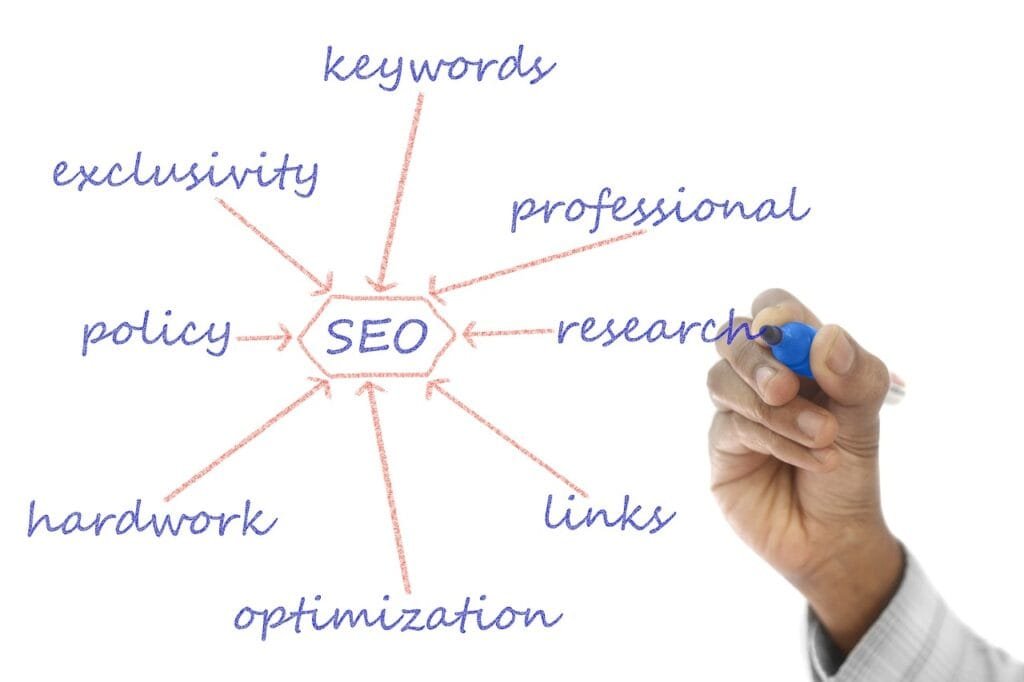Benefits of Customer Segmentation
When it comes to the energy sector, breaking down customers into smaller groups has major perks for marketing. By lumping people into these smaller groups, businesses smartly tweak their ads to really click with each crowd’s needs. Not only does this get customers more involved, but it also makes them happier overall.
Revenue Increase through Segmented Campaigns
Breaking things down into segments really pumps up the money. A report from Hubspot shows that marketers splitting their campaigns into segments can see a crazy 760% jump in sales (Questline). This customized approach makes sure the marketing talk hits home with the right crowd, leading to more clicks and buys, and better outcomes.
Check out the table below to see just how much more the segmented campaigns can rake in:
| Campaign Type | Revenue Increase (%) |
|---|---|
| Non-Segmented | 5% |
| Segmented | 760% |
This mind-blowing difference shows that well-thought-out and spot-on marketing can make a huge impact by catering to various customer cravings.
Improving Customer Engagement and Satisfaction
Divvying up customers into smaller niches doesn’t just boost sales; it ups customer interaction and happiness too. For instance, when utilities target customer segments, they forge stronger bonds by giving out information that’s spot-on for each person’s tastes and needs (Questline).
By keeping customers engaged with custom content and chats, companies can win over loyalty and satisfaction. The proof is in a Deloitte study stretching over ten years, focusing on how folks manage their home energy. It shows that electric companies should get customers committed to positive energy moves like using power smartly and pushing green initiatives (Deloitte).
Bottom line, breaking down customers into segments isn’t just good for the bottom line; it’s key for building a loyal following. For more savvy tips on effective marketing in energy, swing by our reads on energy marketing strategies and energy marketing solutions.
Understanding Customer Segmentation
Customer segmentation is the secret sauce for energy marketers. With it, firms can get their messages right where they need them. By grouping customers based on common habits and likes, companies can fine-tune their approach, making everything feel a bit more personal.
Organizing Customers into Approachable Groups
This whole deal lets energy companies break down their customer list into easier chunks, or segments. Once that’s done, they can chat with each group in a way that actually makes sense to them. Better connection means higher engagement and a boost in their marketing mojo.
The idea? Focused messages that fit like a glove. Got a bunch of customers interested in renewable energy? Target them! Others who just want their energy bill as low as possible? Yep, them too.
| Segment Type | Characteristics |
|---|---|
| Residential Users | Homeowners, different energy needs, or awareness |
| Commercial Users | Businesses with specific energy demands |
| Green Energy Advocates | Wanting sustainable energy solutions |
With the right segments, your marketing moves hit home, and your communication rings true, making every interaction count (Questline).
Defining Customer Segments
Breaking down customer segments isn’t rocket science, but it feels that way sometimes. They’re all about highlighting what makes one group different from another. Think habits, preferences, how much energy they gobble up, or even where they hang their hats.
Getting a firm grip on these stats lets companies serve up content in just the right flavor. Custom-fit marketing? That’s where it’s at.
| Segment Characteristic | Example |
|---|---|
| Energy Consumption Patterns | High, Medium, Low energy users |
| Attitudes Toward Renewable Energy | Supportive, Neutral, Opposed |
| Geographic Location | Urban, Suburban, Rural |
Knowing who you’re talking to helps you whip up marketing campaigns that not only draw folks in but keep them sticking around. When you nod to their individual needs, they feel heard (Questline).
Getting the segmentation game right really cranks up the whole marketing strategy for energy folks. It’s about offering the right stuff at the right time, showing you care about more than just bills. Ready to dive deeper? Check out energy marketing solutions or peep digital marketing for energy companies.
Key Elements of Segmentation
Getting the hang of what makes a segment tick is crucial if you’re in the business of crafting killer energy market game plans. Knowing what different folks want and giving them just that boosts how well energy companies can sell their stuff.
Identifiable Characteristics of Segments
Segments are basically groups of people sharing similar traits that set them apart from other folks out there. We’re talking preferences, tastes, and sometimes quirks (Questline). Here’s a rundown:
| Characteristic | Description |
|---|---|
| Demographics | Age, gender, earnings, and schooling |
| Geographic Location | Urban and rural living, regional differences |
| Energy Usage Patterns | How much energy they use and what kind |
| Environmental Attitudes | Love for green energy versus traditional power |
By mapping utility customers this way, companies get the chance to whisper sweet, relevant nothings directly into the ears of each group (Questline). This makes marketing efforts turnout better and syncs just right with what customers have come to expect.
Tailoring Content for Different Customer Groups
Giving folks what they want is where segmentation shines. It’s about customizing not only what’s being said but also how it gets said to meet the tastes and needs of various bunches of customers (Questline). When energy firms throw perfectly prepared messages their way, the impact and relevance shoot up.
Here’s how it might look:
| Customer Segment | Tailored Content Example |
|---|---|
| Green Energy Enthusiasts | Deets on sustainable energy options and green efforts |
| Cost-Sensitive Customers | Deals on energy-saving gear and money-saving tricks |
| New Homeowners | Tips for energy-smart home fixes and first energy setups |
Playing this game right can do wonders, like boosting revenues by something like 760% for marketers in the know (Questline). By honing in on just what folks need, energy firms get them listening and clicking, making sure that they’re not wasting their marketing moolah.
Want to dig deeper into making energy marketing sing? Check out our sections on energy marketing strategies and energy marketing analytics.
Making Friends via Customer Relationship Management
Customer Relationship Management (CRM) systems are like trusty sidekicks for energy companies looking to power up their marketing. With these handy systems, businesses can sort customers in all sorts of ways, especially by how much energy they need, and tailor-fit campaigns on a personal level.
Sorting Customers by Energy Needs
A strong CRM system is vital in associating customers based on their energy usage. Using data on how much power they use, past chats, and what they’ve said, energy companies can slot customers into neat categories. This helps create marketing strategies that hit the nail right on the head for different customer groups.
Here’s a sneak peek into how customers could be grouped:
| Type of Customer | Energy Use Pattern | Marketing Message |
|---|---|---|
| Low Usage | Less than 300 kWh/month | Share tips for saving energy and promote low-usage gadgets |
| Middle Usage | Between 300 to 600 kWh/month | Push efficiency programs and deals |
| High Usage | More than 600 kWh/month | Offer plans on green energy solutions |
By arranging customers in these buckets, utility folks can run marketing efforts that click with what people need. This keeps customers interested and boosts sales.
Getting Granular with Micro-Segmentation
Micro-segmentation lets energy companies zoom in super close on customer targets. A top-notch CRM makes this a breeze, adapting with every hello and goodbye, and catching little hints on preferences.
This detail supports targeted marketing that speaks directly to the customer’s likes and dislikes, upping satisfaction and sticking points. Maybe some folks are into green energy but want just solar or wind options. Micro-segmentation can pinpoint exactly that.
| Mini-Group | Insight | Plan of Attack |
|---|---|---|
| Green Enthusiasts | Go for renewable energy | Push for solar installations or nifty wind power |
| Tech-Lovers | Dig fresh energy solutions | Promote smart home tech and energy trackers |
By diving into micro-segmentation, energy firms can keep customer chats going strong and change up marketing to suit what consumers want on the spot—leading to marketing wins and happier customers.
Analyzing Trends and Patterns
Energy companies aim to get inside their customers’ heads to craft spot-on marketing strategies. By examining what’s trending and noticing patterns, they can tweak their methods to fit their customers’ needs perfectly.
Predicting Future Behaviors
Using fancy Customer Relationship Management systems (CRM), energy companies have a leg up in spotting trends. This technology helps them predict what customers might want next. By pulling in data from all kinds of places, companies can find regular patterns and stay ahead of what their customers need or might need (Tokara Solutions).
Check out this table of must-know metrics energy companies track:
| Metric | What It Tells You | Why It Matters |
|---|---|---|
| Customer Energy Consumption | How much energy people use over time | Helps predict high-demand periods |
| Customer Feedback | Ratings and reviews from users | Checks if people are happy with the service |
| Market Trends | Reports about what’s hot | Prepares for changes in customer wants |
| Pricing Sensitivity | Reactions to price changes | Finds the best pricing sweet spot |
Keeping an eye on these helps companies avoid problems before they even start.
Proactive Marketing Strategies
With the info from studying trends, energy companies can get ahead by offering what customers want before they even ask. These strategies boost customer involvement and build loyalty that lasts. Some of these smart moves are:
- Targeted Campaigns: Crafting just-right marketing messages based on what different groups need.
- Educational Content: Sharing insights on green energy options to help customers make informed choices.
- Incentivized Programs: Giving discounts or perks to folks who switch to eco-friendly energy options.
By acting on these insights, energy businesses shine even when competition is tough. Adopting energy marketing strategies that speak to different groups ensures that messages hit home with everyone.
To wrap it up, tapping into CRM analytics and taking preemptive steps let energy companies know their customers better and faster than ever. For more tips, check out our pages on digital marketing for energy companies and energy marketing analytics.
Targeted Marketing in the Energy Sector
These days, energy companies are all about connecting with customers who genuinely care. They aim to woo those passionate about green energy, promoting campaigns that don’t just talk the talk but walk the walk when it comes to saving the planet. Utility providers and renewable energy gurus are looking to cozy up with their customers in a more meaningful way, optimizing their efforts for better results.
Focusing on Green Energy Enthusiasts
If you want to make a splash in the green energy pool, you gotta know what makes those eco-conscious folks tick. They care about stuff like sustainability and doing right by the environment, so they’re the perfect crowd for campaigns that show off renewable energy solutions.
Tapping into Customer Relationship Management (CRM) insights helps companies zero in on what makes green advocates tick. It’s all about past buying patterns, how they use energy, and their role in eco-friendly community projects. This data-driven approach means businesses can whip up marketing messages that hit home with this crowd.
Honing in on this group can lead to some pretty cool campaigns—think solar panel discounts, community solar initiatives, or partnerships with brands that wear their eco-friendly badge with pride. By winning over green energy fans, companies show they’re not just stuck in the past; they’re leading the charge towards a greener energy future. Want to see how well these folks are responding? Check out energy marketing analytics to measure their engagement and conversion rates.
Launching Sustainable Energy Campaigns
Rolling out sustainable energy campaigns isn’t just about showing off fancy renewable solutions; it’s about standing tall as champions of a cleaner tomorrow. Effective outreach efforts should do the rounds across marketing channels, making sure they get noticed.
Here’s what those sustainable campaigns can include:
- Awareness Programs: Spread the word on why renewable energy rocks and the importance of using energy wisely.
- Incentive Offers: Sweet deals, like discounts or special financing, for those opting for green energy plans or investing in energy-efficient tech.
- Partnerships: Team up with local governments or groups to back renewable initiatives and expand market reach.
Executing these strategies can rev up customer engagement and keep satisfaction levels high. As reported by Questline, targeted marketing can juice up satisfaction, heighten engagement, and drive conversions by delivering info that matters to the audience.
By wisely slicing and dicing market segments and targeting sustainable energy campaigns, companies can snag not only ardent green energy enthusiasts but also guide everyone else toward the renewable horizon. For more groundbreaking energy marketing strategies, companies should dive into inventive ways that mesh with what today’s market hankers for.
Reshaping Energy Behavior
These days, getting folks to change their energy habits is as important as the energy itself. Knowing what makes different folks tick helps power companies get their message across more effectively.
Motivations and Behaviors of Consumer Segments
Deloitte’s research offers a peek into how electricity providers can shape up energy habits by tapping into what really drives people. Their decade-long Resources Study sheds light on some interesting consumer types, showing that decisions on energy come down to more than just flipping a switch:
| Consumer Segment | Key Motivations | Behavioral Characteristics |
|---|---|---|
| Eco-Conscious | Caring for the planet | These folks are all about finding green energy, love recycling, and are down with conservation. |
| Cost-Sensitive | Saving money | They’re all about the bottom line, always hunting for cheaper energy deals and signing up for discounts. |
| Tech-Savvy | The latest gadgets | Anything that tracks and saves energy is their jam, and they’re quick to snatch up smart gizmos. |
| Convenience Seekers | Anything that’s easy | If it’s hassle-free and requires the least effort, they’re all in—think auto-pay or subscription setups. |
Grasping these motivations lets energy beef up their game by nudging users toward smart energy habits and greener solutions (Deloitte).
Strategies to Influence Energy Management
So, how do you get folks on board with better energy behavior? Here are some plays that electricity providers might run:
Zeroing In: Craft campaigns specifically for each consumer group, honing in on what encourages them.
Sweeteners and Deals: Dish out discounts, rebates, or rewards to get folks taking energy-saving steps.
Spreading the Word: Host sessions or churn out digital content that shows how energy efficiency isn’t just good for the globe but wallets too.
Tech to the Rescue: Push smart gadgetry like energy apps that make saving energy a cinch.
Community Power: Launch local projects that get neighborhoods in on the sustainability action while bringing people closer.
These tactics are all about altering energy behavior and easing into more earth-friendly energy choices. With smartly planned energy marketing campaigns, companies can light up the path to better energy use. Check out more on customizing strategies for energy providers at energy marketing solutions.
Complexities of Energy Markets
Figuring out the tangled web of energy markets is key for businesses trying to carve out their piece of the pie and market their stuff wisely. The UK’s scene, in particular, is a bit of a jigsaw puzzle with heaps of moving parts that mess with prices and call for a steady stream of cash into clever ideas.
Factors Influencing UK Energy Pricing
The price tag on energy in the UK is no straightforward story. It’s a bit of a mixed bag thanks to a bunch of stuff, like the costs of wholesale gas and electricity. With roughly 40% of the UK’s electricity sourced from gas, this plays a massive role in the sticker price Energy UK. Some of the big-ticket items that kick prices around include:
| Factor | What’s Going On |
|---|---|
| Market Price Swings | Gas and leccy price yo-yos bump costs up and down |
| Foreign Swaps | Energy crosses borders messing with supply/demand |
| Rule Changes | New rules and policies stir the pot a bit |
| Supply Line Costs | Getting it where it needs to go eats into pricing |
These factors mix together to keep energy pricing in the UK hopping, forcing companies to change their moves with the times.
Innovations and Investments in the Energy Sector
The UK energy game is a playground of serious cash and mind-boggling new tech. Companies are throwing billions into shiny new energy setups and keeping things ticking. Each year, the tab hits a staggering £13 billion, giving around £30 billion in gross value Energy UK.
To nudge towards Net Zero dreams, an extra £20 billion a year is really needed, mostly from private pockets. Some cool new things popping up are:
| Innovation | What’s That? |
|---|---|
| Wind Turbines | Whopper wind turbines boosting renewable juice |
| Demand Flexibility | Smart ways to keep a steady energy balance |
These leaps forward don’t just make energy use smarter but also scratch the itch for greener options. Knowing the ropes here lets renewable energy companies and others target their pitches better and ride the latest waves in the market.





















